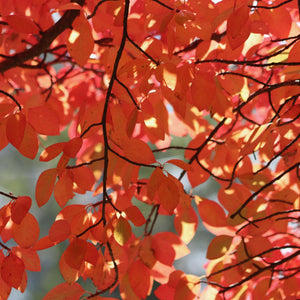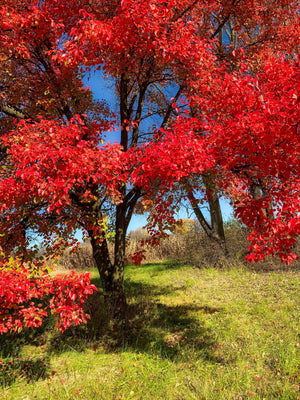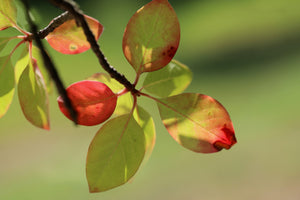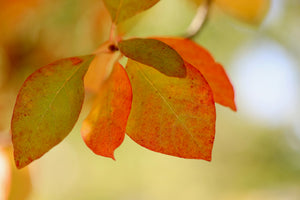The Tupelo Guide
Tupelo trees offer a striking and timeless presence in any landscape. With their distinctive features, including striking fall foliage, textured bark, and an array of shapes and sizes, tupelo trees captivate attention and bring an air of elegance to gardens and outdoor spaces. These remarkable trees are celebrated for their adaptability, thriving in diverse conditions when given the right care and attention. Whether you aspire to craft a serene woodland haven or introduce a standout element in your garden, the choice of tupelo trees is an excellent one.

About
Tupelo trees, encompassing a diverse range of deciduous species within the Nyssa genus, contribute significantly to the tapestry of the natural world. With more than ten recognized species, these trees are widely distributed across temperate regions of the Northern Hemisphere, including North America, Europe, and Asia. Tupelo trees boast an array of unique attributes and play a crucial role in nurturing local ecosystems.
One of the hallmarks of tupelo trees is their distinctively textured bark, which often exhibits shades of grayish-brown, creating a captivating contrast with their foliage. The leaves of tupelo trees typically take on ovate forms with smooth margins, and during the growing season, they showcase a rich array of green hues. As the autumn season arrives, these remarkable trees undergo a transformation, displaying a splendid palette of warm colors, from brilliant yellows to fiery oranges and subtle shades of copper.
Tupelo trees are celebrated for their ecological significance, offering sustenance and shelter to a diverse array of wildlife. Their spring-blooming flowers, arranged in small clusters or catkins, serve as a vital early source of pollen for pollinators like bees and other beneficial insects. Additionally, the seeds of tupelo trees, enclosed within their characteristic and often bumpy husks, serve as a valuable food source for a variety of bird species and mammals.
The adaptability of tupelo trees is evident in their ability to thrive in various soil types and environmental conditions. While they tend to prefer moist and well-drained soils, tupelo trees can flourish in both full sunlight and partial shade. This resilience, combined with their moderate growth rate, renders them an excellent choice for a variety of landscaping projects.
Whether planted as striking focal points in a garden, arranged in clusters to create windbreaks, or thoughtfully incorporated into mixed border landscapes, tupelo trees bring an aura of grace and natural beauty to any environment. Notable species of tupelo trees include the Black Gum (Nyssa sylvatica), recognized for its distinctive appearance and ecological contributions. By selecting and tending to tupelo trees in your landscape, you not only enhance the aesthetic appeal of your outdoor space but also play a role in preserving these remarkable trees and the biodiversity they support.

Planting
Tupelo trees, belonging to the Nyssa genus, have specific planting requirements to ensure their optimal growth and development. Here are some general guidelines for planting and caring for tupelo trees:
Soil: Tupelo trees thrive in well-draining soil that is rich in organic matter. They prefer slightly acidic soil with a pH between 6.0 and 7.0. To prepare the planting site, loosen the soil and incorporate compost or organic matter to enhance drainage and fertility.
Sunlight: Tupelo trees prefer full sun to partial shade. It's essential to choose a location that receives at least six hours of direct sunlight each day. However, they can tolerate some shade, particularly in regions with hot and arid climates.
Watering: Proper watering is crucial for the initial establishment of tupelo trees. After planting, water the tree deeply, and continue to provide regular irrigation throughout the first year. Water deeply and thoroughly once or twice a week, adjusting based on rainfall and soil moisture levels. It's important to avoid overwatering, as excessive moisture can lead to issues like root rot.
Mulching: To conserve moisture, suppress weed growth, and regulate soil temperature, apply a layer of organic mulch around the base of your tupelo tree. You can use materials such as wood chips, bark, or compost as mulch. Keep it a few inches away from the tree's trunk to prevent moisture buildup.
Pruning: Tupelo trees generally require minimal pruning. The primary focus should be on removing any dead, damaged, or crossing branches to maintain a strong and balanced tree structure. Prune during late winter or early spring while the tree is in its dormant state, before new growth emerges.
By following these fundamental planting and care guidelines, you can ensure the successful establishment and healthy growth of your tupelo trees. This will allow them to thrive and contribute to the beauty and ecological value of your landscape for years to come.

Care
Tupelo trees, belonging to the Nyssa genus, require specific care to ensure their optimal growth and health. Here are some general guidelines for the care of tupelo trees:
Watering: During the growing season, it's important to provide adequate watering for your tupelo trees. Aim for approximately one inch of water per week, adjusting this amount as needed based on rainfall. It's crucial to water deeply and thoroughly to encourage deep root growth. Avoid shallow watering, as it can lead to stress and dehydration in the tree. During periods of drought or high temperatures, you may need to increase your watering to ensure the soil remains adequately moist.
Pruning: Tupelo trees typically don't require extensive pruning. However, it's advisable to remove any dead or damaged branches to maintain the tree's overall health and appearance. Shaping the tree to achieve your desired size and form can also be done. Pruning is best performed during the late winter or early spring, before new growth emerges. Always use clean and sharp pruning tools to minimize the risk of damaging the tree. Deadheading spent flowers can also promote new growth and potentially trigger a second blooming.
Fertilizing: Fertilizing can help promote healthy growth and flowering in tupelo trees. Apply a balanced, slow-release fertilizer in the spring or early summer, following the recommended application rates and timing provided by the manufacturer. Avoid over-fertilizing, as excessive fertilizer can harm the tree's roots. When in doubt, it's better to err on the side of caution and use less fertilizer.
Soil and Sunlight: Tupelo trees thrive when planted in well-drained, moist soil and exposed to full sun. While they are relatively tolerant of different soil types, it's essential to provide well-draining soil to support their optimal growth. Additionally, mulching around the base of the tree can help retain moisture and regulate soil temperature.
Pests and Diseases: While tupelo trees are generally resistant to pests and diseases, it's still important to remain vigilant for common issues such as pests like aphids or potential diseases. If you observe any signs of damage or disease, promptly treat the tree with appropriate insecticides or fungicides.
By following these fundamental care guidelines, your tupelo trees will thrive, providing beauty, shade, and a majestic presence in your garden for years to come.

How To Use
Tupelo trees offer a unique and versatile way to enhance your landscape. Here are some recommendations based on their characteristics:
Focal Point: Tupelo trees possess a captivating presence, making them an ideal choice as a focal point in your landscape. Plant a single tupelo tree in an open area to showcase its elegant form and distinctive bark. Alternatively, create a stunning visual impact by planting a group of tupelo trees together.
Shade Tree: With their broad canopy, tupelo trees provide excellent shade. Plant them strategically near outdoor seating areas, patios, or decks to create a cool and comfortable space where you can relax and enjoy the outdoors.
Windbreak: Tupelo trees, with their sturdy growth and lush foliage, can serve as an effective windbreak. Plant them in a row to shield your garden or home from strong winds, providing a natural barrier and protection.
Privacy Screen: Utilize the dense foliage of tupelo trees to create a natural privacy screen in your landscape. Plant them in a row along your property line to establish an attractive and functional barrier that enhances both privacy and aesthetics.
Wildlife Habitat: Tupelo trees contribute to the overall biodiversity of your garden by attracting various wildlife species. Birds and other animals are drawn to the seeds and shelter provided by tupelo trees. Create a welcoming habitat by planting tupelo trees and enjoy the sight and sounds of wildlife flourishing in your outdoor space.
When selecting tupelo trees for your landscape, consider their growth rate and environmental requirements. Ensure they are planted in areas that receive full sun or partial shade and provide well-drained soil. With their distinctive form and appealing features, tupelo trees are an exceptional addition that will enhance the beauty and functionality of your outdoor environment.
Conclusion
Tupelo trees are a captivating and versatile addition to any landscape. Their remarkable presence, distinctive foliage, and ecological significance make them a sought-after choice for various settings. By adhering to proper planting and care practices, you can enjoy the beauty and benefits of tupelo trees in multiple ways, whether it's creating a picturesque driveway or providing a cool retreat in your backyard. Whether you choose to showcase their elegance as a focal point or incorporate them into a larger design, tupelo trees offer endless possibilities to enhance the allure of your outdoor space. With dedication and care, you can create a breathtaking landscape that will bring you lasting joy for years to come.
